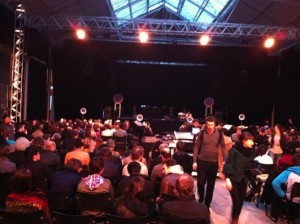I decided to release a second album following my Video Music concept. This means that every track on the album originally was conceptualized as a mus[……]
Dissolvement – late summer 2020
I made this music video as the summer was dying off into the first pandemic autumn. Not saying what it meant to me, I’m hoping it will mean somethin[……]
Video Music – new album release based on video
Video Music – release date June 21, 2020. A concept album. The concept for this instrumental music album is that I typically started with video ideas[……]
Prize Winner track: “Yin and Yang at Dusk” for OddGrooves Lockdown Song Contest
In early May 2020 OddGrooves.com shared a generous gift with the worldwide musician’s community, the Lockdown Grooves Pack. A free pack of drum kit p[……]
New Extended Musical Instruments that Rock
I love all kind of expressive musical instruments and have been lucky to acquire a few, many to be seen in this space-rock video.
The newest is the e[……]
Behold the “Stick Street” CD album!
The physical “Stick Street” CDs just arrived from the pressing plant. I’m mostly selling them hand to hand when out street busking, but in case someone wants a CD for his/her colledtions it can be ordered from:
http://perboysen.bandcamp.com/album/stick-street (packages posted from Stockholm, Sweden)
and
http://www.cdbaby.com/cd/perboysen5 (packages posted from Portland, OR, USA).
Digital Download sales available at the normal online web shop sites.


[……]
Producing octaphonic surround concerts
 I’d like to share my recent experiences from performing live with surround sound. The system dealt with is the diamond shaped surround field of eight full-range speakers. I will go into planning, preparation and stage setup strategies. The general approach is to create the most exciting live performance experience for the audience.[……]
I’d like to share my recent experiences from performing live with surround sound. The system dealt with is the diamond shaped surround field of eight full-range speakers. I will go into planning, preparation and stage setup strategies. The general approach is to create the most exciting live performance experience for the audience.[……]
Lovely Harp Guitar!
Just a quick video upload testing out my new Tim Donahue signature Electric Fretless Harp Guitar. I think it plays like a dream… in fact I have been dreaming for decades about certain aspects of what this instrument has to offer. Tim designed it and has been playing this and the fretted version since the eighties and just recently initiating manufacturing of his harp guitars. You’ll find more on that at http://www.timdonahue.com/
[……]
I love my Stick!
After having my new instrument, the Chapman Stick, for five months I finally decided to shot a video of it. What makes the Stick so fun to play is tha[……]
CDM covers one of my electronic instrument designs!
Wow, what an honor only to be mentioned by such a great webzine as CDM, Create Digital Music! “Dreams of a Musical Future: Digitópia Winners’ Wondrous[……]